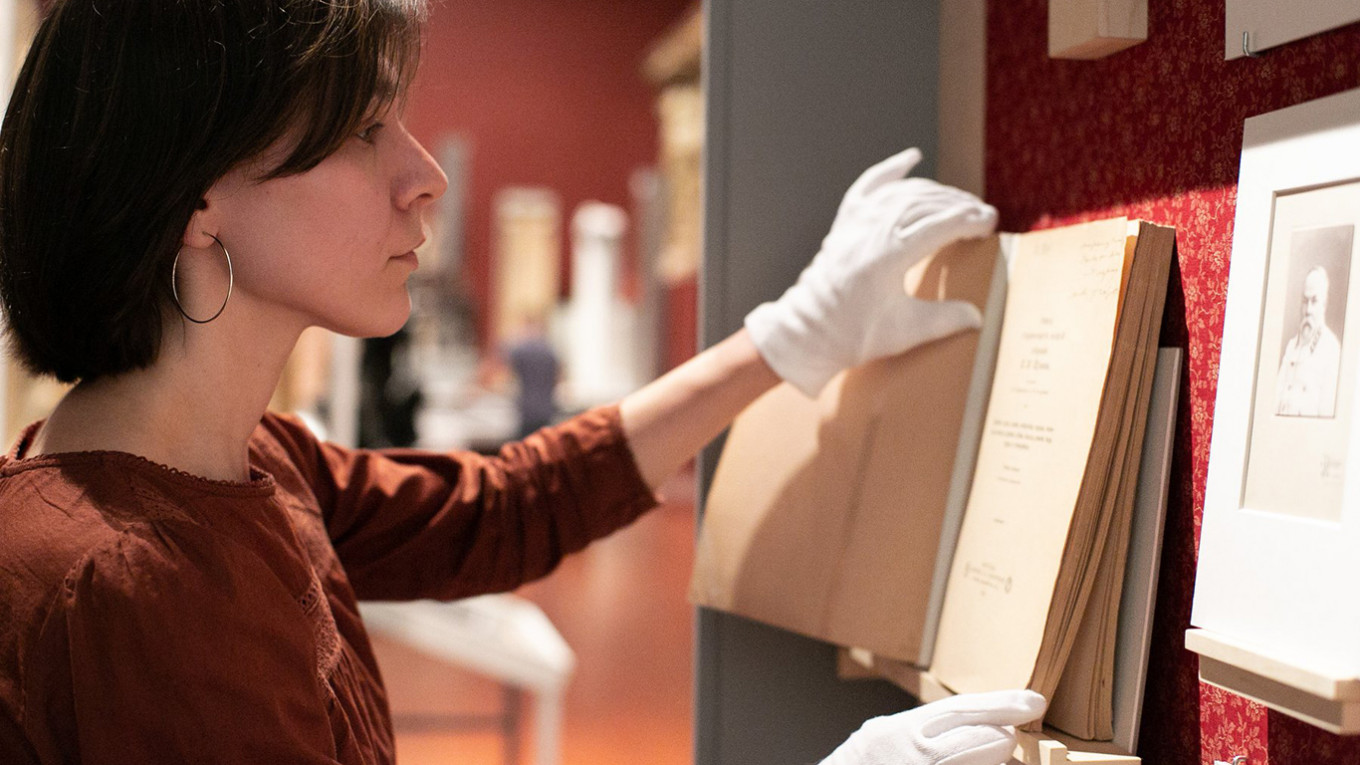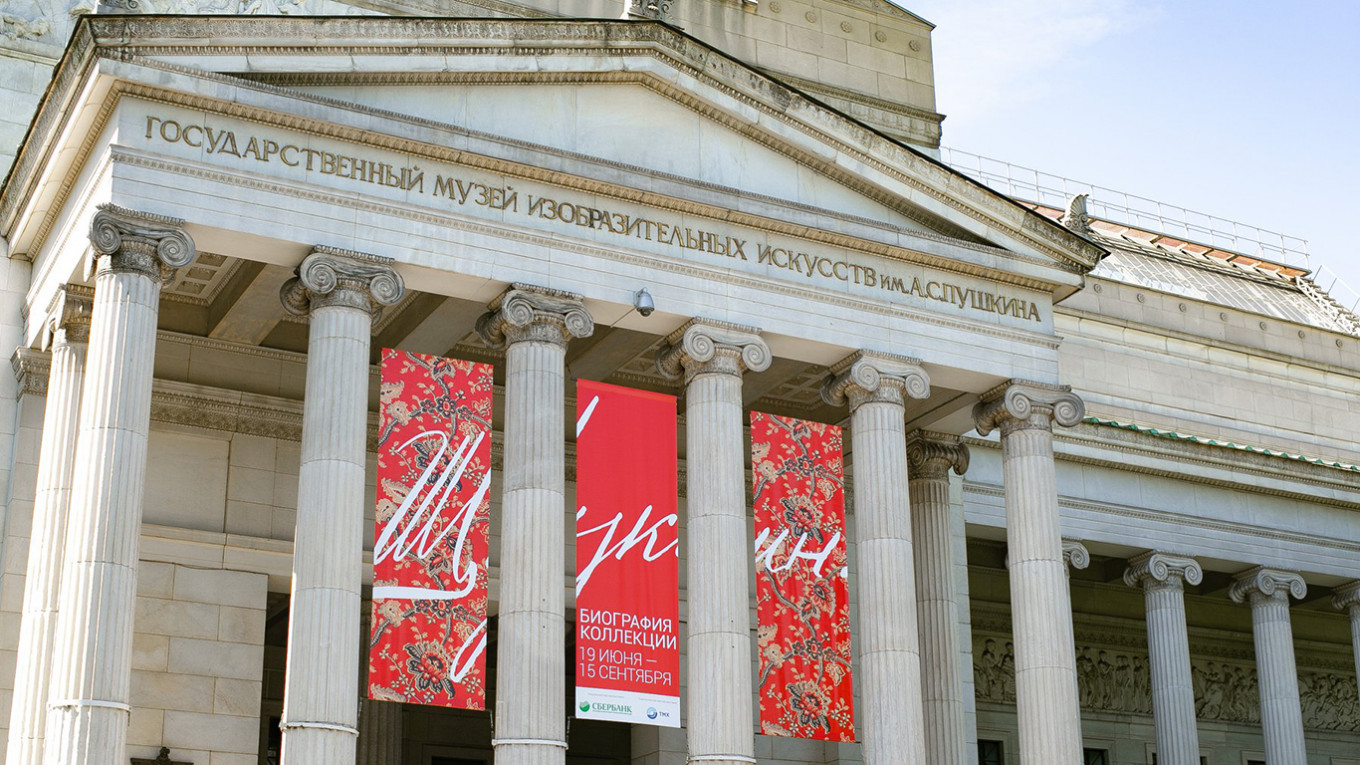An unsuspecting tourist strolling down Volkhonka Street on a weekday afternoon may notice a curious phenomenon. A strand of people unfurls from the yard of the Pushkin Museum of Fine Arts onto the sidewalk for nearly a block down the otherwise empty street. Hundreds of people wait in line to see one of the most anticipated events of the season: 150 works from the Sergei Shchukin collection of late 19th- and early 20th-century European art, exhibited in the halls of the museum as they were once was shown in the Shchukin house. Shocking then but canonical now, the collection was recently displayed in Paris, where it attracted 1.2 million visitors.
A wealthy cloth merchant, Shchukin began collecting art during trips to France from 1889 to 1914. He met artists and art dealers, learned about collecting, and bought paintings that often ran against both his own and established tastes, intuiting that these works would become important. He hung them in his Moscow mansion, where the collection was open to the public from 1908 and where Shchukin himself occasionally conducted tours for his guests.
After the October revolution, Shchukin emigrated to Germany and in 1918, Lenin signed a decree that rendered his collection the property of the Soviet state. The paintings were moved to various museums and storage facilities until Stalin divided them mainly between the Pushkin Museum in Moscow and the Hermitage in St. Petersburg. The collection also weathered four years of the Siberian cold when it was evacuated to Novosibirsk after Germany attacked the Soviet Union in 1941.
Now the Pushkin Museum seeks to “display one of the world’s largest collections as completely as possible,” an undertaking involving not only the Hermitage, but also the State Historical Museum, the State Museum of Oriental Art, the Moscow Kremlin Museums, Kuskovo State Museum-Estate, and the Museum of Fine Arts (Budapest).

The exhibit’s 11 halls occupy most of the museum and chart a biography of Sergei Shchukin, his family, and the evolution of his collection and artistic tastes. Shchukin is portrayed as a prophetic figure engaged in an educational mission to acquaint Russia with the future of European art. The exhibit’s first hall has only one painting: Matisse’s “Dance” (1910), which Shchukin commissioned and hung in his home. In the white marble hall, visitors gaze at the canvas in reverent silence.
Before the collection of Sergei Shchukin resumes, there are four halls with items from the collections of his brothers. A hall dedicated to Pyotr Shchukin has the most diverse contents: there are not only paintings such as Renoir’s “Nude Seated on a Sofa” (1876), but also pillows, daggers, sculptures, and a collection of intricate gold keys that belonged to the tsars. Two halls of Dimitry Shchukin’s collection follow. These paintings are mostly religiously themed and span from the 15th to the 19th centuries. A dimly lit final room showcases the paintings of Ivan, the youngest Shchukin brother, who introduced Pyotr and Sergei to new French art. A highlight of this room is Monet’s “Lilacs in the Sun” (1872).
The remaining halls recreate Sergei Shchukin’s collection to reflect the arrangement of art in his mansion. The first hall is devoted to impressionism, Shchukin’s main interest until 1904, and displays the works of Monet, Renoir, and Degas. The exhibit flows into another room bathed with the lush colors of Van Gogh’s paintings and Gaugin’s Tahitian pastorals, including his famous “Are You Jealous?” (1892). Shchukin’s interest in Gaugin developed in parallel with his interest in Cézanne, and the following room presents Cézanne’s works, such as “Pierrot and Harlequin” (1888).
Then comes a hall exploding with the vivid colors of Henri Matisse’s palette. These colors shocked Shchukin, but he considered them the art of the future and became one of Matisse’s main patrons. Shchukin’s support freed Matisse to take on bigger artistic experiments as well as visit Russia in 1911, where he encountered old Russian icons. Matisse was delighted by the “moving simplicity” of the human form in sacred Russian images, which came to dramatically influence his art. The Shchukin collection includes 37 paintings by Matisse, many of them commissioned by Shchukin himself.
It was through Matisse that Shchukin met Pablo Picasso and eventually collected 50 of his paintings. The next two halls display Picasso’s works. There is also a room with the works of Henri Rousseau and Andre Derain. The final painting of the exhibit is Christian Cornelius (Xan) Krohn’s Portrait of Sergei Shchukin (1916).
Visitors are delighted. “What a joy that one of our countrymen collected this art and pensioners like me can come here and bask in it!” exclaimed one woman. When asked what he liked most about the exhibit, another visitor replied, “Oh, I love Monet, Degas, Matisse, Picasso… I love everything!" Nodding in agreement, a mother turned to her young son and asked, “Wasn’t it worth waiting in line?”
"Shchukin: Biography of a Collection" runs through Sept. 15 at the Pushkin Museum of Fine Arts. 12 Ulitsa Volkhonka. Metro Kropotkinskaya. www.pushkinmuseum.art Those who wish to learn more about the collection can also buy the book issued for the exhibition: “The Shchukin Saga: Collectors of Masterpieces” by exhibition consultant Natalia Semyonova.
A Message from The Moscow Times:
Dear readers,
We are facing unprecedented challenges. Russia's Prosecutor General's Office has designated The Moscow Times as an "undesirable" organization, criminalizing our work and putting our staff at risk of prosecution. This follows our earlier unjust labeling as a "foreign agent."
These actions are direct attempts to silence independent journalism in Russia. The authorities claim our work "discredits the decisions of the Russian leadership." We see things differently: we strive to provide accurate, unbiased reporting on Russia.
We, the journalists of The Moscow Times, refuse to be silenced. But to continue our work, we need your help.
Your support, no matter how small, makes a world of difference. If you can, please support us monthly starting from just $2. It's quick to set up, and every contribution makes a significant impact.
By supporting The Moscow Times, you're defending open, independent journalism in the face of repression. Thank you for standing with us.
Remind me later.






